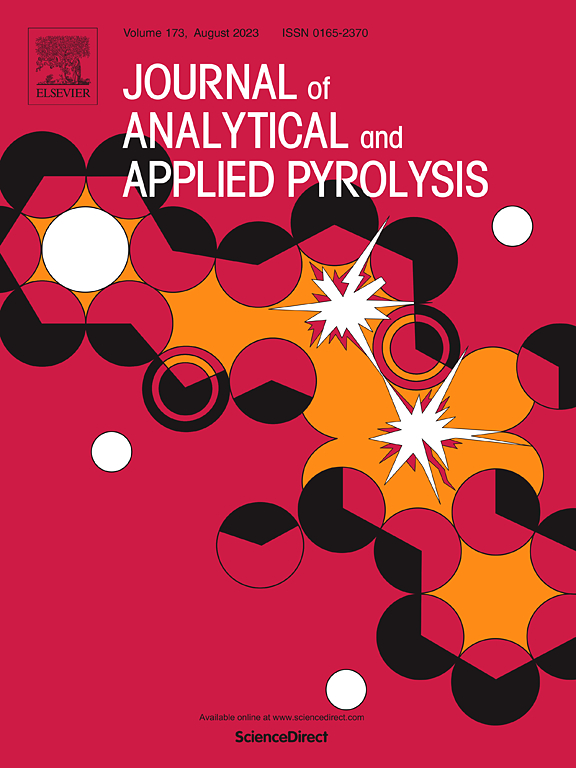在玉米秸秆和轮胎共同热解过程中,增强产品分布和相互作用的协同效应
IF 5.8
2区 化学
Q1 CHEMISTRY, ANALYTICAL
引用次数: 0
摘要
人们一直在研究共热解从生物质和废轮胎中回收能源以及提高生物油质量的潜力。本文采用 TG-FTIR-GC/MS 技术和快速红外加热反应器研究了废轮胎(WT)和玉米秸秆(CS)的共热解行为和机理。根据 TG-FTIR-GC/MS 分析,共热解协同作用促进了甲烷和芳烃的产生,同时抑制了 CO2 的形成。共热解产物的分布表明,在 30 % WT 的比例下协同效应最佳,最高产油偏差为 19.67 %,最低产水偏差为-13.30 %。利用响应面法(RSM)对产油量进行了优化,在加热速率为 25 °C/s 和 WT 比率为 40 % 时,产油量最高,为 30.25 wt%。根据油分析,在所有条件下,油的轻质部分(汽油和柴油)均超过 50%,油中含有大量芳烃(超过 30%)。焦炭特征表明,在共热解过程中,一些金属与 -S 自由基结合,在焦炭中形成了大量的金属硫化物和硫酸盐。本文章由计算机程序翻译,如有差异,请以英文原文为准。
Enhanced synergies for product distributions and interactions during co-pyrolysis between corn stover and tyres
Co-pyrolysis has been studied for its potential to recycle energy from biomass and waste tyres, as well as enhance the quality of the bio-oil. In this paper, the TG-FTIR-GC/MS technique and a fast-infrared heated reactor were used to investigate the co-pyrolysis behaviors and mechanism of waste tyres (WT) and corn stover (CS). Based on the TG-FTIR-GC/MS analysis, co-pyrolysis synergy promoted the production of methane and aromatics while inhibiting the formation of CO2. Co-pyrolysis products distribution shows that the best synergy occurred at a ratio of 30 % WT with the highest oil yield deviation of 19.67 % and the lowest water yield deviation of −13.30 %. Response surface method (RSM) was utilized to optimize the oil production and the highest oil yield of 30.25 wt% was acquired at a heating rate of 25 °C/s and a ratio of 40 % WT. According to the oil analysis, the light fraction of oil (gasoline and diesel) was more than 50 % in all conditions and there was a large number of aromatics (more than 30 %) presented in oil. The char characteristics indicated that several metals combined with -S radicals during co-pyrolysis which formed much metal sulfide and sulfate in chars.
求助全文
通过发布文献求助,成功后即可免费获取论文全文。
去求助
来源期刊
CiteScore
9.10
自引率
11.70%
发文量
340
审稿时长
44 days
期刊介绍:
The Journal of Analytical and Applied Pyrolysis (JAAP) is devoted to the publication of papers dealing with innovative applications of pyrolysis processes, the characterization of products related to pyrolysis reactions, and investigations of reaction mechanism. To be considered by JAAP, a manuscript should present significant progress in these topics. The novelty must be satisfactorily argued in the cover letter. A manuscript with a cover letter to the editor not addressing the novelty is likely to be rejected without review.

 求助内容:
求助内容: 应助结果提醒方式:
应助结果提醒方式:


